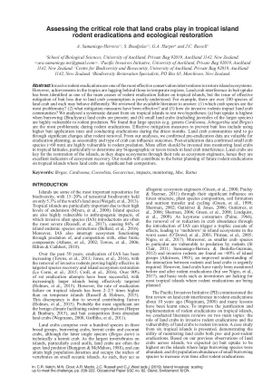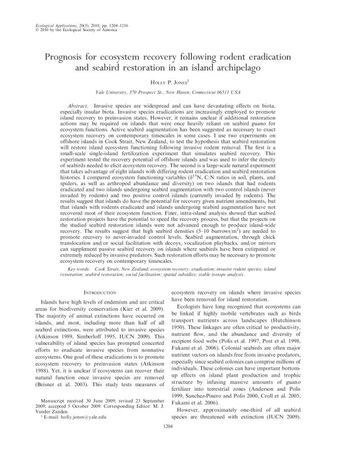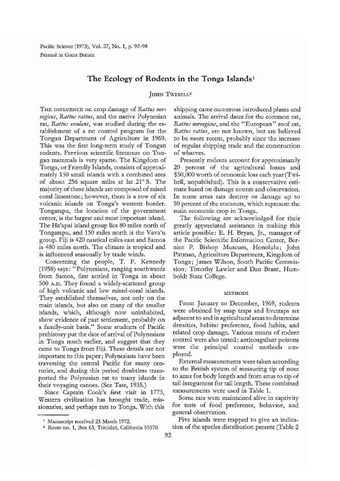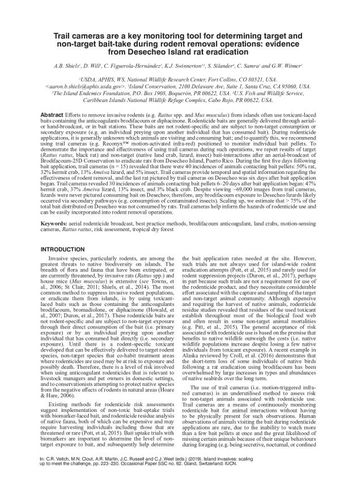Assessing the critical role that land crabs play in tropical island rodent eradications and ecological restoration
- Description:
- Invasive rodent eradications are one of the most effective conservation interventions to restore island ecosystems. However, achievements in the tropics are lagging behind those in temperate regions. Land crab interference in bait uptake has been identified as one of the main causes of rodent eradication failure on tropical islands, but the issue of effective mitigation of bait loss due to land crab consumption is poorly understood. For example, there are over 100 species of land crab and each may behave differently. We reviewed the available literature to answer: (1) which crab species are the most problematic? (2) what mitigation measures have been effective? and (3) how do invasive rodents impact land crab communities? We analysed a systematic dataset from six tropical islands to test two hypotheses: (a) bait uptake is highest when burrowing (Brachyura) land crabs are present; and (b) small land crabs (including juveniles of the larger species) are highly vulnerable to rodent predation. We found that large species (e.g. genera Cardisoma, Johngarthia and Birgus) are the most problematic during rodent eradications. Effective mitigation measures to prevent bait loss include using higher bait application rates and conducting eradications during the driest months. Land crab communities tend to go through significant changes after rodent removal. From our analyses, we confirmed pre-eradication data are valuable for eradication planning, as seasonality and type of crab can influence outcomes. Post- eradication data confirmed small crab species (
- Display date:
- 2019
- Collections:
- Secretariat of the Pacific Regional Environment Programme (SPREP)
- Publisher:
- International Union for Nature Conservation (IUCN)
- Content partner:
- Secretariat of the Pacific Regional Environment Programme (SPREP)
- Availability:
- Not specified
-
Copyright status: All rights reservedFind out more about what you are able to do with this itemThis item is all rights reserved, with means you'll have to get permission from Secretariat of the Pacific Regional Environment Programme (SPREP) before using it. For more information, please see our use and reuse page.What can I do with this item?Non-infringing useNZ copyright law does not prevent every use of a copyright work, and this item may be hosted by an international institute or organisation. You should consider what you can and cannot do with a copyright work.No sharingYou may not copy and/or share this item with others without further permission. This includes posting it on your blog, using it in a presentation, or any other public use.No modifyingYou are not allowed to adapt or remix this item into any other works.No commercial useYou may not use this item commercially.
Related items
Welcome and warm Pasifik greetings
The information on this site has been gathered from our content partners.
The names, terms, and labels that we present on the site may contain images or voices of deceased persons and may also reflect the bias, norms, and perspective of the period of time in which they were created. We accept that these may not be appropriate today.
If you have any concerns or questions about an item, please contact us.



